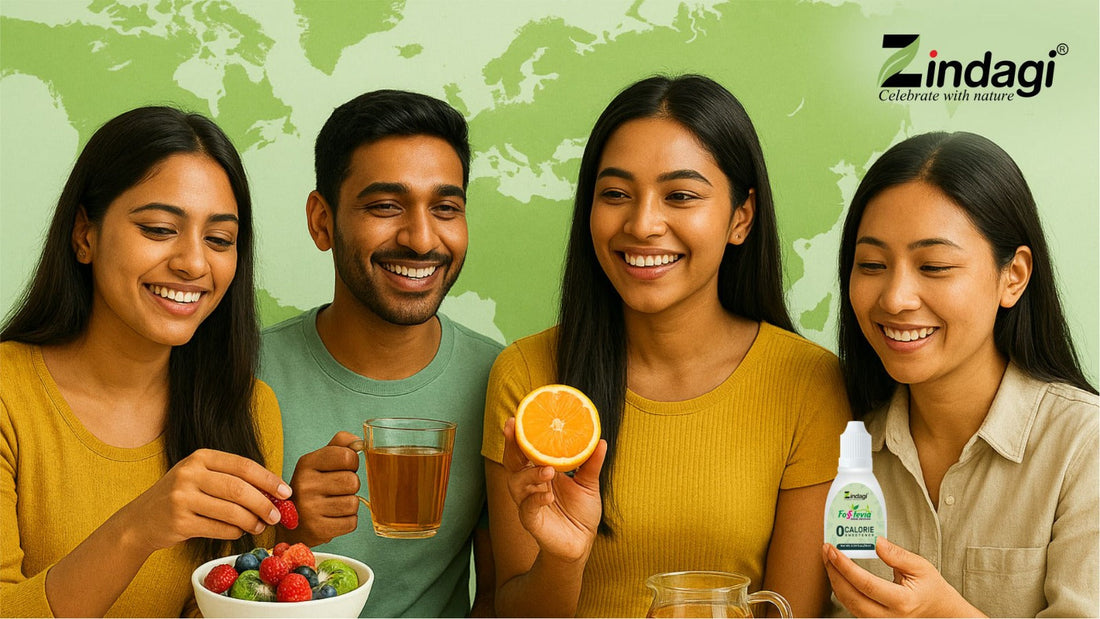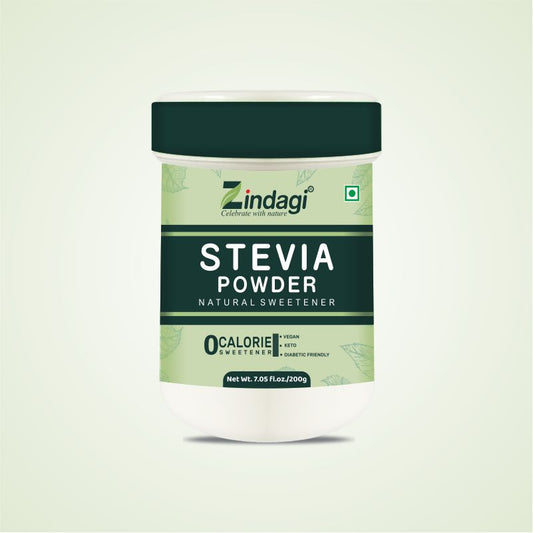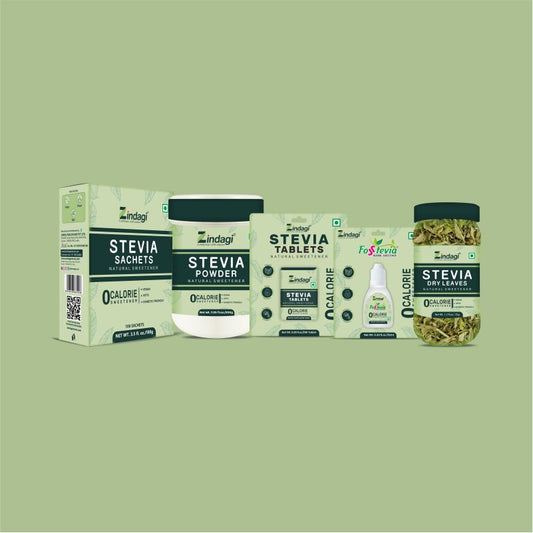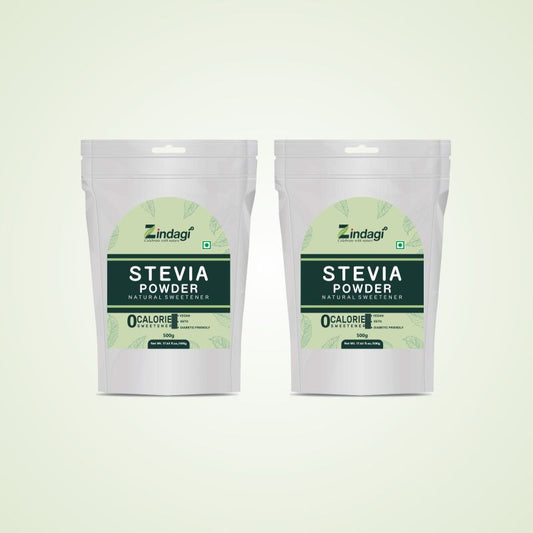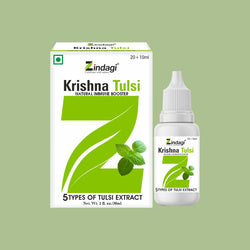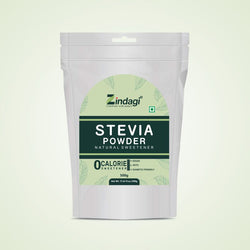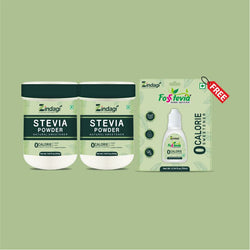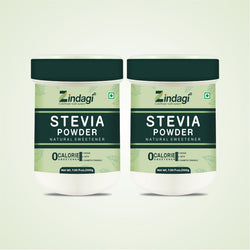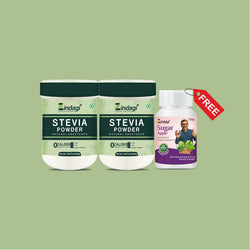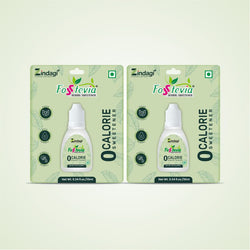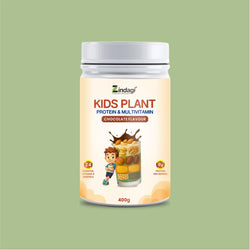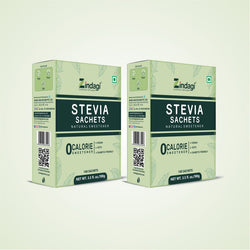Sugar has been the undisputed king of the modern foodscape for some time now, hiding in sauces, drinks, desserts, and surprising ways when we read the labels on processed foods. But as our awareness of the harms of excessive sugar consumption increases, we are experiencing a worldwide revolution in both industrial and consumer behaviour, that embraces sugar-free, sugar substitute, and diabetic-friendly products. This increasingly changing landscape is changing, what it fundamentally means to indulge, and instead of guilt-ridden snacking being just a slogan, it has become an increasingly obtainable and desirable element of life.
This blog will take you through policies, science, culture, and lived experience to demonstrate how the world is embracing a sweeter future without the heavy price of sugar.
“Sweetness need not be a guilty pleasure; it can be kind to your body too.”
Why the Urgency? The Health Toll of Too Much Sugar
We cannot emphasize it enough: consuming too much sugar is one of the main risk factors in the development of metabolic disease. The overconsumption of "free sugars" (added sugar + sugars from syrups, juice, etc.) can significantly lead to obesity, type 2 diabetes, fatty liver, tooth decay and cardiovascular disease.
The World Health Organization (WHO) recommends that free sugars be limited to less than 10% of total energy intake, and even suggests an aspirational limit of below 5% (approximately 25g or ~6 teaspoons for an average adult) for better health.
But, in many countries, the average sugar intake is well above that - hidden in sugary beverages, snacks, and processed foods. The challenge has been that consumers do not often see "sugar" in very obvious places, because it is hidden in cereals, sauces, flavoured yogurt, and condiments.
So, the movement to reduce sugar is not just about cutting down on dessert - but is really about a systemic change throughout the entire food system.
Global Policies and Public Health Campaigns — Pushing the Needle
Government agencies and public health organizations across the globe recognize that relying solely on individuals' willpower is insufficient. The structural environment must be altered. Here are some notable examples:
United Kingdom: The introduction of the Soft Drinks Industry Levy (sugar tax) was intended specifically for drink manufacturers to reformulate their products. More recent early evidence suggests that many of the high-sugar drinks were replaced with lower-sugar or sugar free substitute.
Mexico: With alarmingly high rates of diabetes in Mexico there was a tax on sugar sweetened beverages and junk food. This resulted in a decrease in purchases of the taxed products, especially in lower-income populations.
South Africa: A Health Promotion Levy (sugar tax) was implemented in 2018 for sugary beverages, based on grams of sugar per litre. Initial studies show sugar-sweetened beverage consumption dropped.
Labelling and marketing restrictions are now common, requiring visible sugar content labelling, warning labels, and marketing restrictions to children.
Voluntary industry pledges: beverage associations and some food companies voluntarily pledge to reduce sugar, or to offer more no/low sugar options.
Reformulation strategies: governments are encouraging/mandating that food manufacturers take small steps to gradually reduce sugar content in these products (e.g. cereals, yogurts) so palates adapt over time.
Each of these policy levers (taxation, labelling, reformulation, marketing controls) work together to impact the supply side and nudge the industry and consumers towards a lower-sugar default.
Trends & Consumer Mindsets: The Rise of “Sweetness Optimization”
According to market research (for example, Innova Market Insights), sugar has been identified as the most significant ingredient that consumers want to lower or eliminate.
However, one of the most important insights was that people do not want “less sugar” — they want “healthier but just as sweet.” This is at the heart of sweetness optimization, not merely sugar reduction, but flavour optimization, mouthfeel, and sensory satisfaction.
Some players in the industry are exploring options that run deeper than simply swapping sugar. For example, Kerry (a food-ingredient company) mentions “Taste sense Sweetness Optimization” as an optimized and complete approach to combining different blends of sweeteners, masking agents, taste enhancers, and flavour modulation to provide a palatable experience in reduced or zero sugar beverages.
In practice, you see hybrid sweetener blends (stevia + erythritol + flavour enhancers) that can minimize or mitigate aftertaste, balance sweetness, and provide mouthfeel. It is more of an art and science than just a chemical substitution.
The Science & Controversies of Sugar Substitutes
Switching to a sugar substitute might seem like a straightforward win, but the science has nuances, and debates are ongoing.
Types & How They Work
Broadly, sugar substitutes fall into:
-
Non-nutritive sweeteners (zero or very low calorie) e.g. stevia, monk fruit, aspartame, sucralose, saccharin, acesulfame K.
-
Sugar alcohols (polyols) — e.g. erythritol, xylitol, sorbitol, typically slower to metabolize, fewer calories, sometimes used in “sugar-free” gum, candies.
-
Low-calorie sugars / rare sugars — e.g. allulose, which have similar mouthfeel but lower metabolism in the body.
Many of these do not directly raise blood sugar — meaning they’re attractive for diabetic individuals. According to Mayo Clinic, artificial sweeteners “don’t affect blood sugar” directly.
However, some studies show complexities:
· Some meta-analyses find little effect of artificial sweeteners on body weight or glycemic control.
· A prospective study found associations between higher artificial sweetener intake and greater risk of type 2 diabetes, even after adjustment for confounders.
· Recently, a study linked just one diet soda a day with 38% higher risk of type 2 diabetes — raising eyebrows
So, while sugar substitutes are often better than table sugar for blood sugar control, they are not a “free pass.” They should be used thoughtfully, and ideally, paired with a diet rich in whole foods.
Reformulation: Hidden Hero of Sugar Reduction
Product reformulation is often a subtle but impactful approach in many sugar reduction initiatives. Rather than developing brand new product line, food manufacturers will simply take an existing product and make adjustments such as lowering the sugar, changing the texture, or substituting out for sugar alternatives.
Advantages of reformulation:
Broad reach: Common food items (breakfast cereals, yogurts, sauces) provide a reach to many, so even a small reduction is significant.
Continuity for consumers: A gradual change is less disruptive than a sudden one; many people don’t notice every adjustment.
There are challenges such as texture, volume, shelf-stability, taste and cost. Some replacements, such as sugar alcohols, can cause some digestive issues and changing the sugar may alter moisture, acidity or require additional bulking agents or structure.
In short, reformulation is a pillar in the transition to sugar free food.
The Diabetic & Pre-Diabetic Community: Gains and Cautions

For those with diabetes or prediabetes, reducing sugar is not simply a trend - it's essential. There are more diabetic-friendly snacks than ever before, which is a big plus... but there is also a limitation.
The Big Plus:
· More variety: sugar-free chocolates, low-carbohydrate baked goods, beverages sweetened with stevia or monk fruit.
· Enjoyment with safety: one can satisfy a craving without destabilizing blood sugar.
Important considerations:
· You cannot assume "sugar-free" translates to being "safe." Some sweetened foods additionally contain fats or starches which can impact glycemic level
· We do not fully understand the metabolic impacts of long-term use of artificial sweeteners
· Portion control still matters, small overconsumption of “safe” treats can add up
A balanced plan: prioritize whole, unprocessed foods and natural sugars, use sugar substitute sparingly, and consider your own body's responses (blood sugar, gut health, etc.).
Stories of Change: Innovation & Success
Let's focus on a few examples of sugar reduction in the real life:
· Nestlé, Unilever, PepsiCo, Coca-Cola, and others all have global "reformulation and health & wellness" divisions - reviewing hundreds of products to shift sugar down, or replace it.
· Action on Sugar (UK), a public health charity, has called for more sugar limits and reformulations in sweets, soft drinks, and children's products.
· New product innovation: everywhere you look there are now zero-sugar sodas, stevia-sweetened yogurts, allulose-sweetened snacks, and cleaner-label alternative products across markets.
· Consumer-led trends: demand for “no added sugar,” “reduced sugar,” “naturally sweetened,” and “sugar-free” claims is shaping supermarket shelf space.
These examples show how industry, civil society, and consumers can align — turning sugar reduction from niche to mainstream.
Behaviour Change & Education: Empowering the Consumer
Policies and products matter, but without consumer education and behavioural strategies, change will stop.
Some initiatives:
· Front-of-pack labelling that shows sugar content clearly, warns about high sugar content, and uses a traffic-light system to help shoppers immediately compare options and make better choices.
· Public campaigns (e.g., "Sugar Awareness Month," "No Sugar November") to raise awareness about "hidden" sugar.
· Nutrition education in schools that teaches children to read labels, recognize sugar names, and make good snack choices.
· Digital tools, such as apps that scan barcodes to identify “free sugar” or other hidden sweeteners.
· Mindful eating, which encourages people to take time to enjoy eating, lessen "sweet craving" triggers, and to swap in naturally sweet items (fruits, cinnamon, vanilla) when they can.
It is both a technical solution and a cultural and behavioural shift for us to reduce sugar consumption.
Who Benefits — and Who Gets Left Behind?
An important aspect that can sometimes be overlooked is equity. Will sugar reduction programs benefit everyone or widen gaps?
· In some localities, low-cost sources of sugar are more accessible than low-cost sources of good nutrition. Sugar reduction strategies often reformulate existing packaged products or advocate for new; however, in many situations, reformulated or sugar-free products can be more expensive, limiting access for low-income populations.
· Collectively, public policies should be matched with subsidies or incentives or distribution strategies to ensure that healthy varieties are available to communities with limited access to healthy foods.
· Another key consideration is creating culturally relevant alternatives to sugary products. This may include local recipes, traditional sweets reimagined with more natural sweeteners through the design process, and community engagement
If sugar reduction strategies are not carefully executed, there is a risk that they serve only an increasingly privileged population who do not struggle with inequities while leaving the most vulnerable behind.
Tips & Strategies for Embracing Guilt-Free Snacking in Your Daily Life
Start gradually: reduce sugar in coffee/tea slowly, 10–20% less each week.
Using natural sweeteners: using natural sweeteners like stevia or monk fruit.
Choose whole foods: fruits, nuts, unsweetened yogurt, dark chocolate (small % cocoa) as base snacks.
Read labels: watch out for multiple sneaky sugars (maltose, dextrose, syrup, maltodextrin).
Use spices & extracts: cinnamon, vanilla, cardamom can enhance sweetness perception without sugar.
Reserve sweet treats: treat “sugar-free” snacks as occasional indulgences, not daily staples.
Monitor your body: blood sugar, digestion, mood, assess how different sweeteners affect you personally.
Conclusion: A Sweeter Future, Without the Guilt
We are in the middle of a global change - moving away from sugar-filled indulgence to purposeful sweetness. Through policy, innovation, consumer demand, and science, the world is forming a path toward healthful satisfaction.
Initiatives around sugar reduction - sugar-free lines, reformulation, behavioural nudges, or regulatory systems - are more than trends. They’re transformations in how society thinks about and consumes sweetness. And it’s necessary - we can’t keep taking the metabolic burden of sugar.
The vision is this - desserts, drinks, and snacks that taste good and are healthful. Sugar alternatives can be used as tools not crutches. Diabetic communities can belong not be excluded. And everyday people can participate in guilt-free snacks that can be enjoyable, sustainable, and nourishing.
So, while you are walking the aisles or going down the recipes, remember - a sweeter future is not about deprivation, it’s about transformation. One mindful choice at a time.
Frequently Asked Questions
1. Is sugar-free always healthier?
Not always. “Sugar-free” simply means little to no added sugar, but some snacks may still contain fats or carbs that impact blood sugar. Always check labels and portion sizes.
2. Which sugar substitutes are best for diabetics?
Natural options like stevia, monk fruit, and erythritol are best since they don’t raise blood sugar levels. Artificial sweeteners should be used in moderation.
3. Do sugar substitutes help with weight loss?
They can reduce calorie intake if they replace sugar, but relying too heavily on sweeteners might maintain sugar cravings. Balance is key.
4. Are sugar substitutes safe?
Most approved sweeteners are considered safe by the FDA and WHO, though some people may experience digestive discomfort from sugar alcohols.
5. How can I start embracing guilt-free snacking?
Choose snacks made with natural sweeteners, like nuts, fruits, or sugar-free bars. Focus on whole, nutrient-rich foods instead of processed options.
6. Will cutting sugar ruin the taste of my food?
Not at all! Over time, your taste buds adjust. You’ll begin to enjoy the natural sweetness in foods without needing extra sugar.

